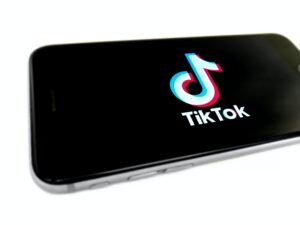Estimated reading time: 5 minutes
Recently I wrote about which podcast metrics you should be taking note of on your show’s hosting platform, on podcast players, and on your website.
But there is another area to consider: social media.
Social media is the ideal place to find new podcast listeners and drive them to your podcast. But this can be hard to achieve. Often people spend huge amounts of time posting about their shows on social media – they might even build up a considerable following – but it’s somewhat meaningless if none of these people are actually clicking through to your podcast and contributing to your downloads.
However, one of the ways to avoid this is by getting to know your social channels well and the metrics that come with it. This way, you can see what’s working, what isn’t, and begin streamlining people’s journeys to your podcast via social media.
Choosing your platforms
If you don’t already, you should consider creating a page/channel for your podcast on each of the main social media platforms (or at least the ones most relevant to your show and its target audience).
Consider being active on:
- TikTok
- YouTube
Note that Facebook is less likely to drive a huge amount of reach unless you pay for Facebook Ads, so possibly not worth the effort. But if you can post to Facebook automatically when you post to Instagram, then it does no harm – just don’t expect much!
But … Facebook could be a great environment to build a community around your podcast – a safe space where your listeners can gather and share stories. Depending on the type of content you are publishing, this could be a very good strategy to grow your audience, and enable a much deeper engagement with your listeners.
TOP TIP: Don’t forget Pinterest! It is second only to YouTube as a social platform, and the internet’s number 1 source for inspiration. You can pin audiograms (short clips, not whole episodes), and 1-minute videos. Pinterest’s audience is mostly female right now, but it is being under-utilised for podcast promotion.
Understanding analytics

Each social media platform has its own analytics platform. Twitter, for example, has Twitter Analytics, whereas YouTube offers channel analytics within the YouTube Studio.
Impressions figures will tell you how many people you have reached, but it is the engagement metrics that will tell you the bigger story i.e. how many people are liking, commenting, and sharing your posts. These people are your advocates.
When it comes to people finding new podcasts, people tend to do this via other podcasts (guests or recommendations from hosts), through friends and family, or through social media. With this in mind, you need to be prepared to build up a relationship with people on social platforms. This is the best way to open doors and find new podcast fans. So, make sure you follow those who are engaging with you back, reply to their posts, and keep the conversation going. And if they have a podcast, give theirs a mention on your socials too.
Discovery on YouTube

YouTube is a REALLY important platform for listening/watching podcasts, and plays a crucial role in podcast discovery.
In fact, YouTube has just been found to be the biggest platform for consuming podcasts in the US (source Cumulus Media & Signal Hill Insights Podcast Download Report Spring 2022). And 60% of weekly podcast listeners say they prefer podcasts with video – those who have started listening more recently are more likely to prefer podcasts with video.
Many podcast studios now have cameras, which smooths out the whole process of videoing whilst you are recording your audio.
If you need some extra tips on how to film your podcast we have a blog post you can check out.
But even if you can’t film your entire podcast recordings, if you can video some short snippets to post on YouTube, these ‘teasers’ could really help from a discovery point of view. There is a huge potential audience (particularly millennials and Gen Z) on YouTube, which should definitely form part of your podcast growth strategy.
YouTube video metrics will give you an even greater depth of understanding as to how people are engaging with your content. In YouTube’s studio you can find an overview of your channel’s metrics, such as how many views your channel is receiving, where your audience is based, and how people are finding your content (e.g. through direct searches or via suggested videos). You can also dig deeper into an individual video, looking at things like how long people are watching for, and on what device. If a particular video has done really well views-wise, it might be worth looking into its analytics to try and find out more.
The rise of TikTok

TikTok is hugely popular with younger audiences, so whilst thinking about video platforms, it should not be ignored – particularly to help with discovery.
TikTok’s ‘for you’ tab primarily shows you content from accounts you haven’t seen before, which means the platform is always getting your content in front of new people and, in the context of podcasts, potentially finding you new listeners.
TikTok is one of the fastest-growing social media platforms. With more than a billion people coming to the app every month, alongside clues that the platform is diving deeper into podcasting (they recently hired somebody to work in their ‘Podcast Operation’), one thing becomes very clear: TikTok could be a great opportunity for you and your show. It could become the next best place for watching podcast clips.
Social media management tools
When it comes to social media, you might want to use a management platform to help you track your analytics. Some popular examples include Hootsuite, Buffer, Sprout Social and Loomly, although there are many more out there.
The great thing about these tools is you can link all your social platforms to them and then have all of your metrics in one place. They can make it easier for you to track your progress, spot overall trends, and download reports to revisit in the future.
However, it’s probably not a good idea to only use these tools. The data you’ll find on the social platforms themselves is often much richer, allows you to make your own comparisons, and helps you to understand how the social platform works.
All in all, social media can be a tough nut to crack, but the opportunity here for podcasters is huge. If your show isn’t currently active on social media, I’d highly recommend changing this. Take some time to research the platforms (i.e. where are your audience most likely to be?), get to know those platforms’ metrics, and start engaging with your audience. It could be one of the best decisions you make for your podcast.
